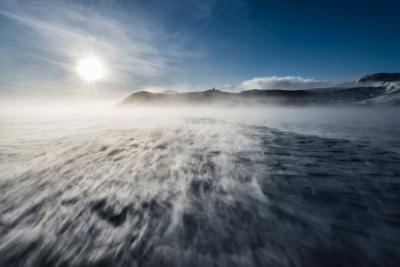The Antarctic Peninsula Föhn Wind‐induced Melt Regime from 1979‐2018
Surface melt on the Antarctic Peninsula has traditionally been attributed to sunlight melting snow although more recent studies demonstrate significant contributions in all seasons from warm, downslope winds called föhn winds. Here we combine data from a regional climate model and surface Automatic Weather Stations to quantify how much melt is caused by föhn winds on the Antarctic Peninsula.
The findings in the study provide the first long-term and spatial melt estimates of föhn wind-induced surface melt on the Antarctic Peninsula and will be used to evaluate the fidelity of climate simulations. Furthermore, the use of weather stations to inform a Machine learning model to identify when and where föhn winds occur represents the first use of machine learning with ground-based data to inform model output, and a useful tool for climate analysis.
Our Föhn Detection Algorithm (FöhnDA) identifies the surface föhn signature that causes melt from measurement by 12 Automatic Weather Stations, that train a machine learning model to detect föhn in 5 km Regional Atmospheric Climate Model 2 (RACMO2.3p2) simulations and in the ERA5 reanalysis model. We estimate the fraction of AP surface melt attributed to föhn and possibly katabatic winds and identify the drivers of melt, temporal variability, and long‐term trends and evolution from 1979–2018. We find that föhn wind‐induced melt accounts for 3.1% of the total melt on the Antarctic Peninsula and can be as high as 18% close to the mountains where the winds funnel through mountain canyons. Föhn occurrence, more than föhn strength, drives the annual variability in föhn‐induced melt. These results will be used to assess the fidelity of climate model (E3SM) simulations of the causes of melt and freshwater ocean inputs around the Antarctic Peninsula.

